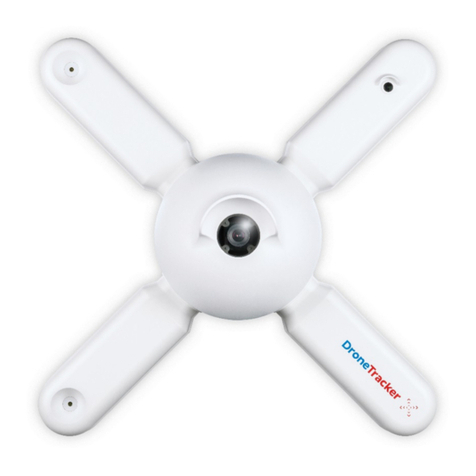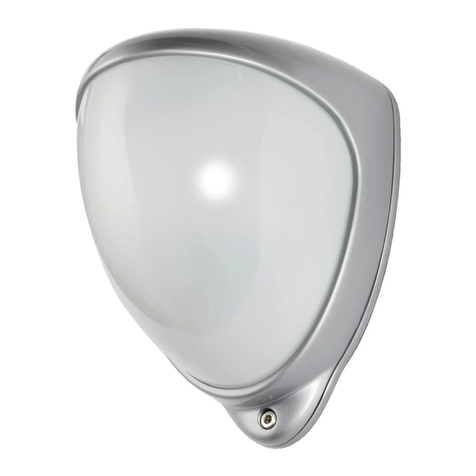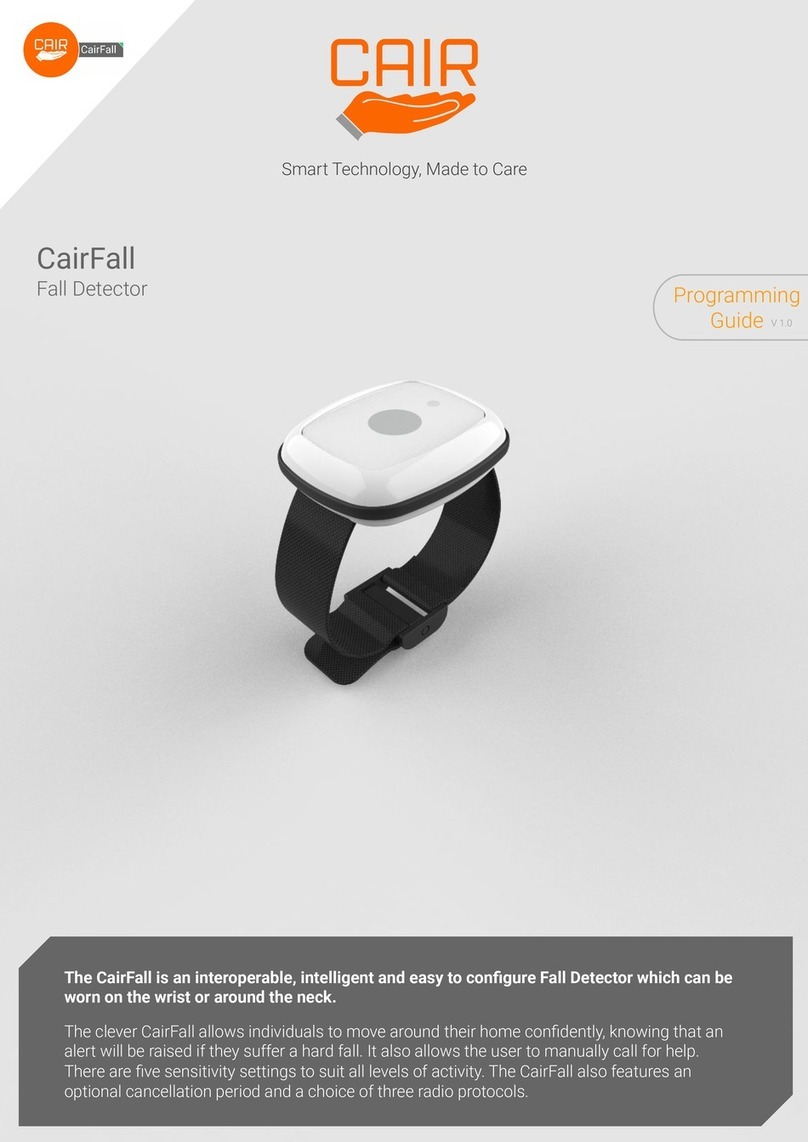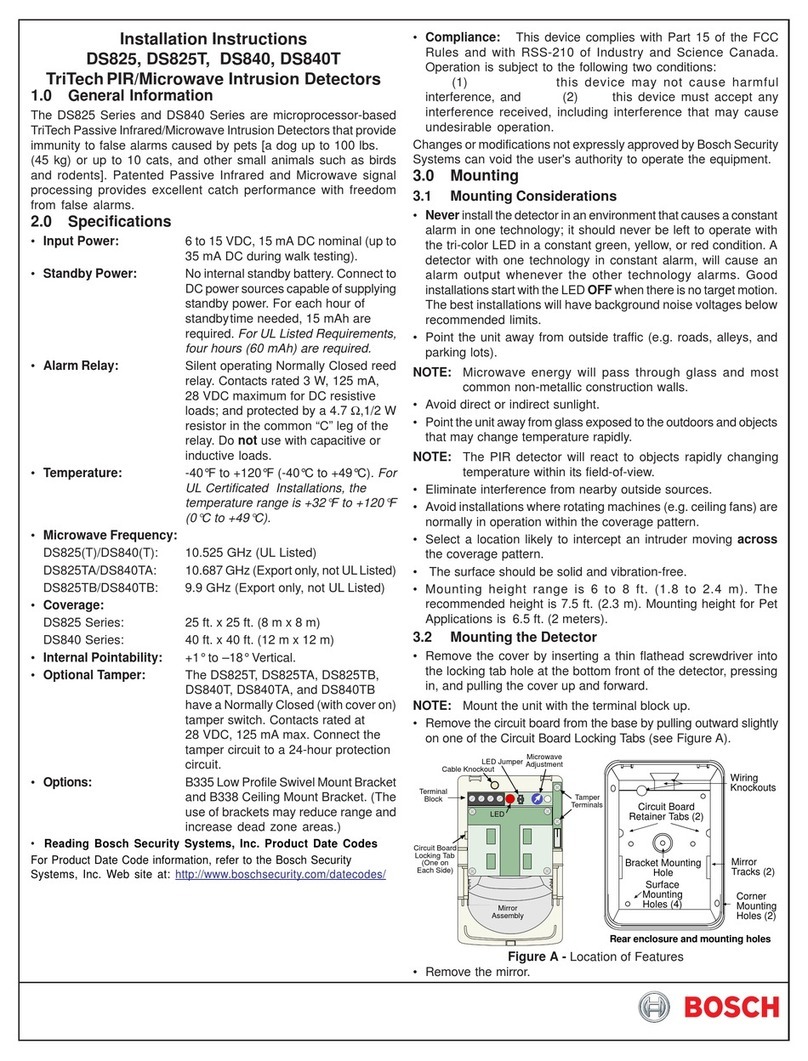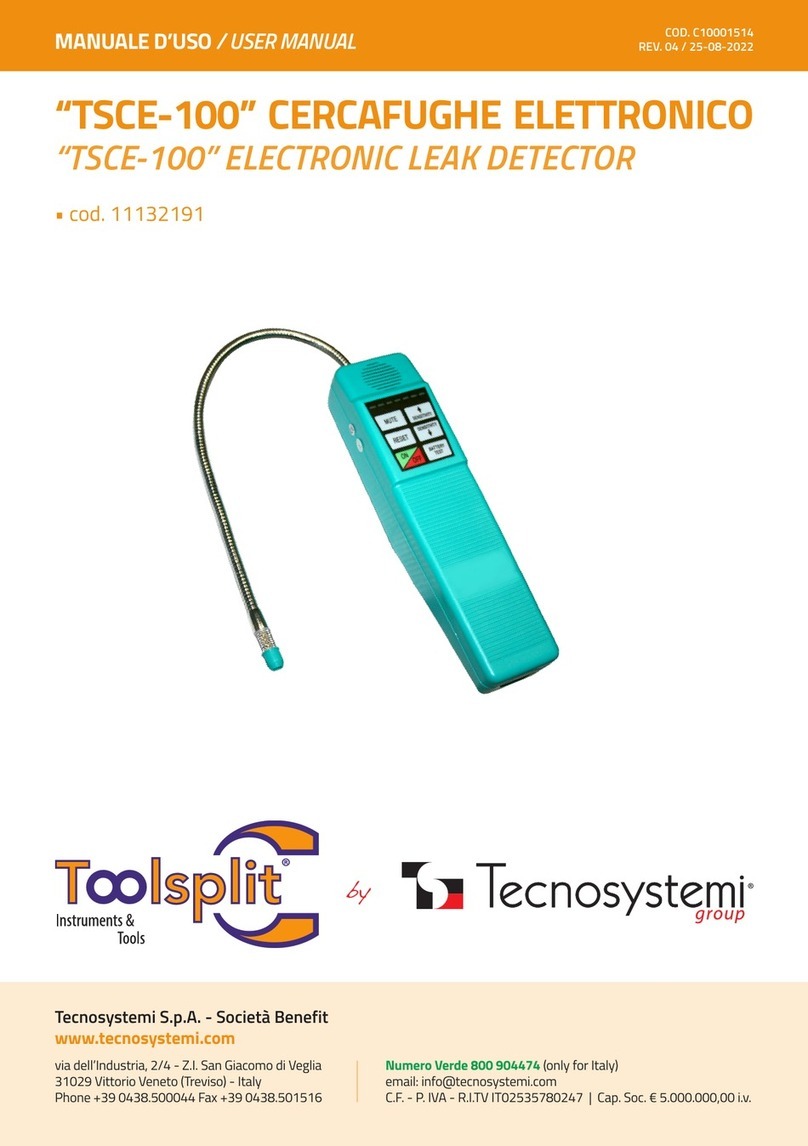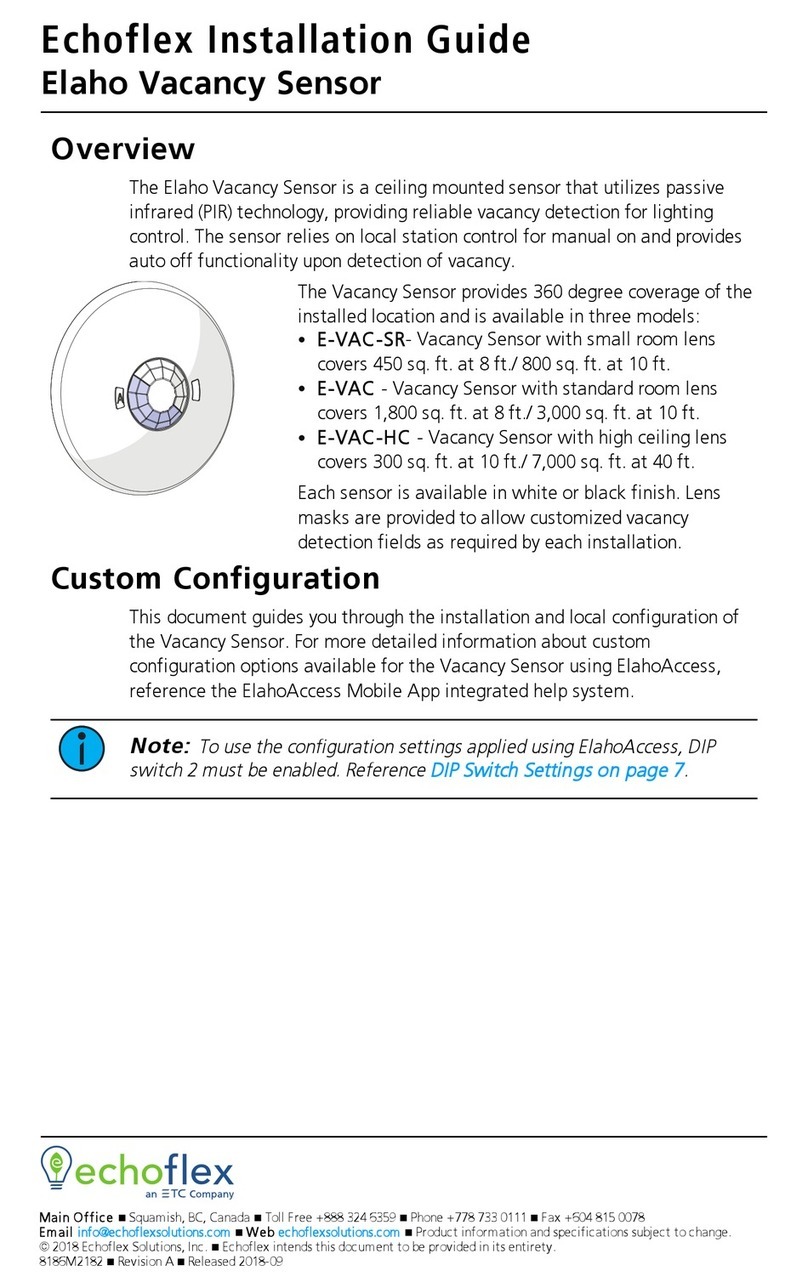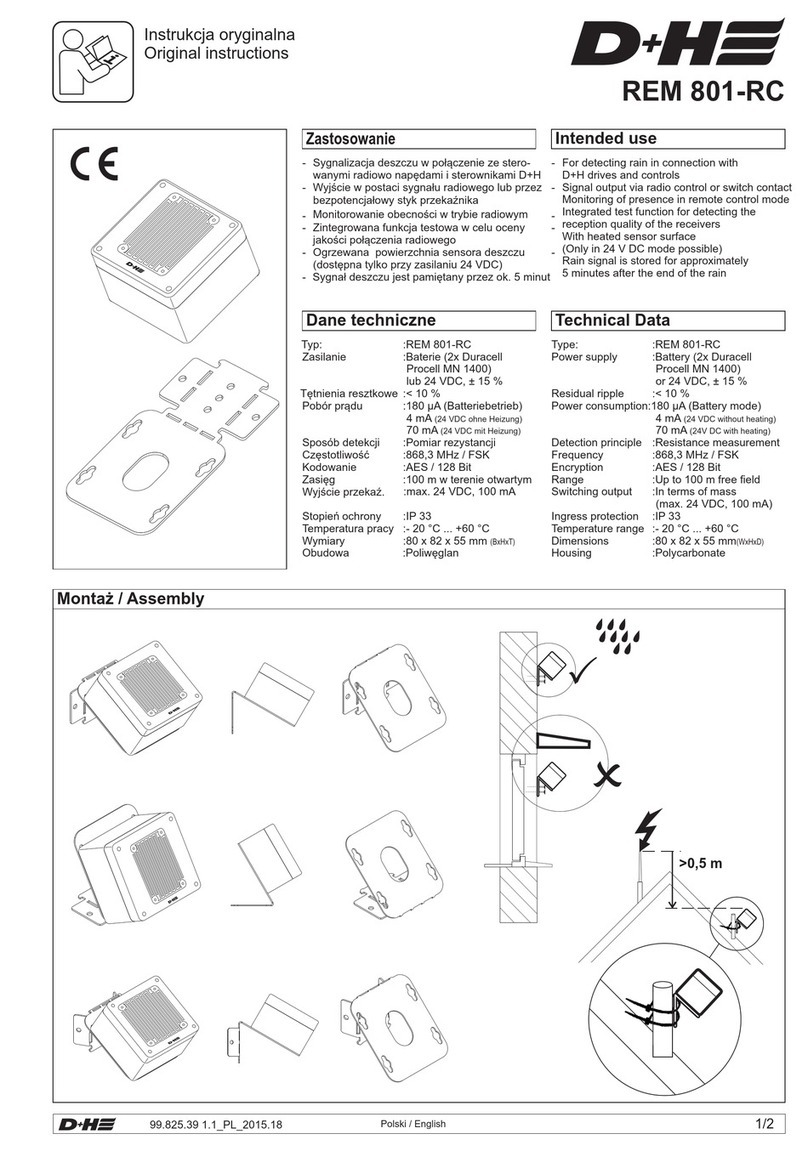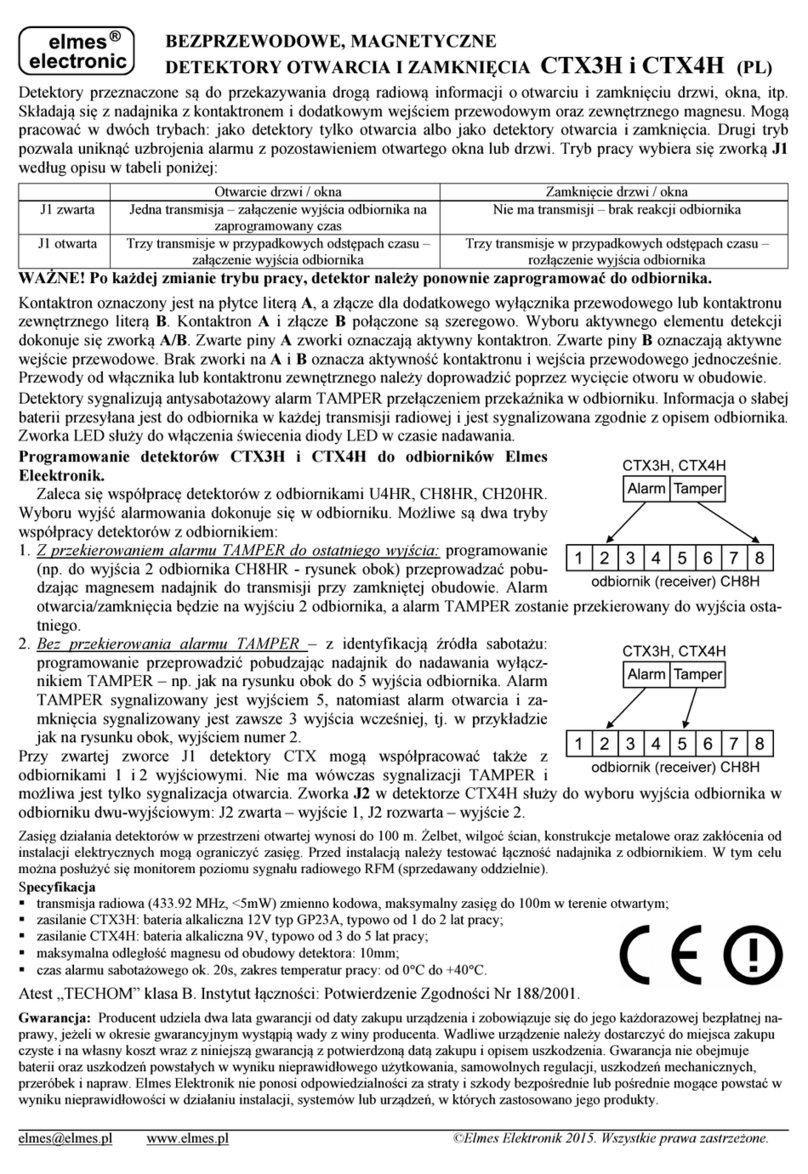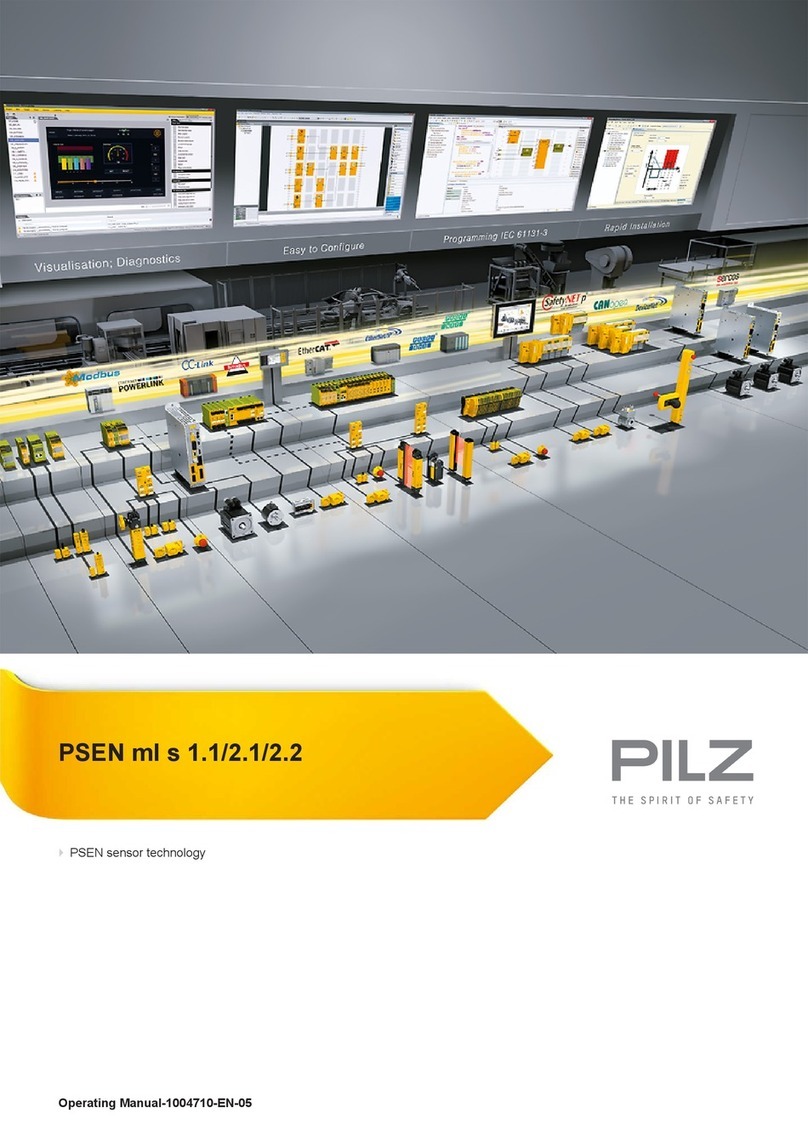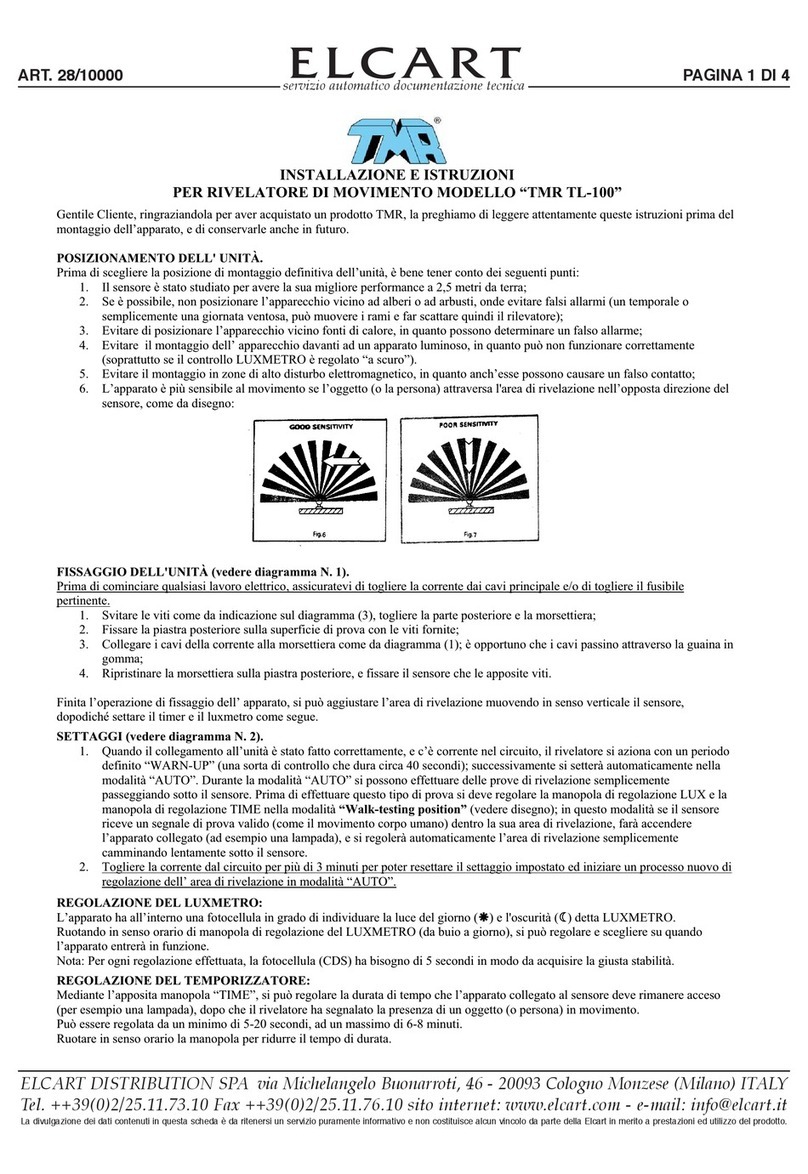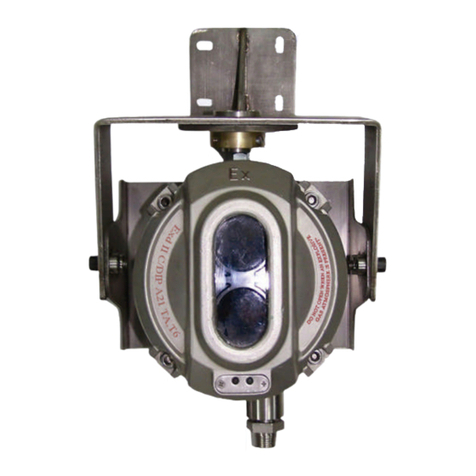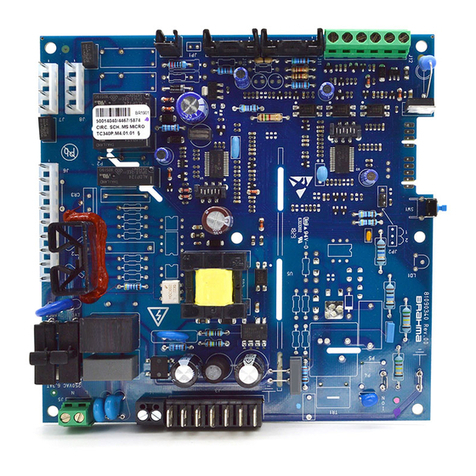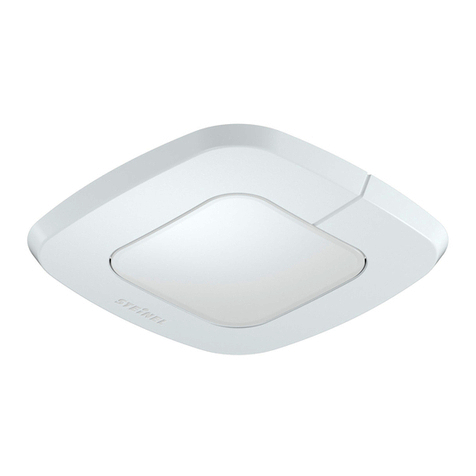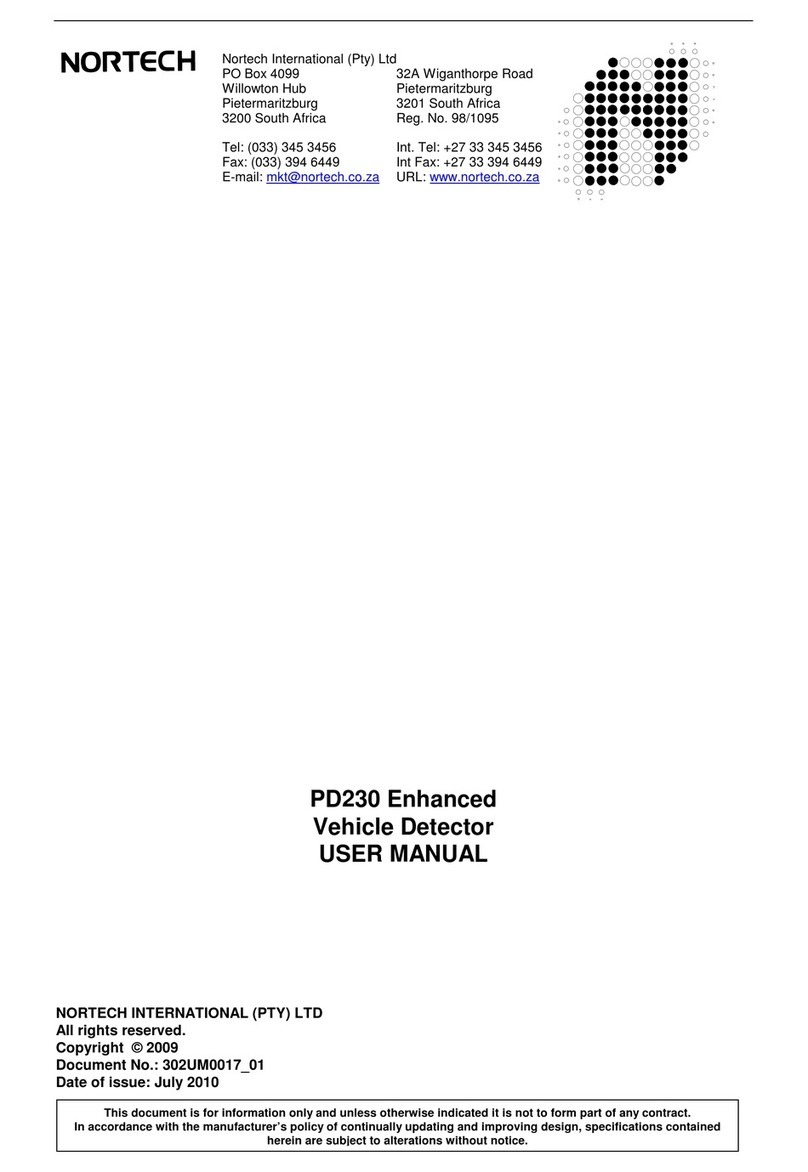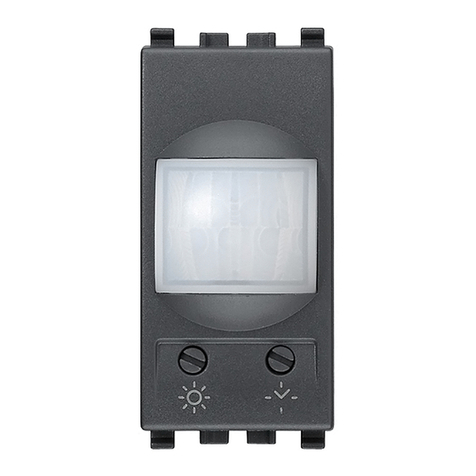Dedrone RF-310 User manual

ENGLISH
IM-Inst-RF310en v1.0
RF-310
INSTALLATION MANUAL
Detects, classifies, and locates drones and
their remote controls and communicates
directly to the cloud or local network.

Dedrone
2v1.0 IM-Inst-RF310en
Legal Provisions
The information contained in these documents is the property of Dedrone Holdings, Inc.. Any publication,
whether in whole or in part, requires prior written approval by Dedrone Holdings, Inc.. Internal reproduction
used solely for the purpose of product evaluation or other proper use is allowed and does not require prior
approval.
The declaration of conformity is available on request at support@dedrone.com.
Copyright
This manual is the intellectual property of Dedrone Holdings, Inc. and is protected by copyright. All rights
reserved.
Dedrone Holdings, Inc.
45662 Terminal Dr.
Sterling, VA 20166
USA
Fon +1 703 2608051
Email info@dedrone.com
©2023 Dedrone Holdings, Inc.. All rights reserved.

IM-Inst-RF310en v1.0
Dedrone
3
Content
1 Safety ..............................................................................................................................................4
1.1 Symbols.................................................................................................................................................................4
1.2 Intended Use ........................................................................................................................................................4
1.3 Safety Information..............................................................................................................................................5
2 The RF-310 ..................................................................................................................................... 6
3 Unpacking....................................................................................................................................... 6
4 Scope of Delivery ..........................................................................................................................6
5 Select the Mounting Place .......................................................................................................... 7
5.1 Mounting Location .............................................................................................................................................. 7
5.1.1 Detection Conditions ..................................................................................................................................... 7
5.1.2 Direction Finding and Localization Conditions ........................................................................................8
5.2 Mounting Location ..............................................................................................................................................9
6 Installation................................................................................................................................... 10
6.1 Power Supply ..................................................................................................................................................... 10
6.2 Required Tools....................................................................................................................................................10
5.3 Overvoltage Protection ...................................................................................................................................10
6.3 Cable Requirements...........................................................................................................................................11
6.4 Cable Preparation...............................................................................................................................................11
6.5 Mount sensor...................................................................................................................................................... 12
6.5.1 Mount sensor on a thin pole (1.5" to 3")................................................................................................... 12
6.5.2 Mount sensor on a thick pole (from 3") ...................................................................................................14
6.5.3 Mount sensor on a wall................................................................................................................................ 15
7 Integrate the RF-310 in your DedroneTracker ....................................................................... 16
7.1 Integrate the RF-310 in your on prem DedroneTrackerServer ................................................................. 17
7.2 Connect and Configure the RF-310 to your Dedrone Cloud ...................................................................... 18
9 Cleaning........................................................................................................................................ 19
8 Decommissioning ....................................................................................................................... 19
8.1 Shut down the RF-310...................................................................................................................................... 19
8.2 Dismantling ........................................................................................................................................................ 19
8.3 Disposal ............................................................................................................................................................... 19
10 Technical Data .............................................................................................................................20
11 Appendix....................................................................................................................................... 21

Safety Dedrone
4v1.0 IM-Inst-RF310en
1 Safety
1.1 Symbols
Symbol Explanation
Indicates a situation which, if not avoided, can result in property damage
Information that is important for a specific goal, but is not safety-relevant
Indicates a requirement for meeting a specific goal
Desired result
A problem that might occur
Action to resolve a problem
1.2 Intended Use
The RF-310 is a passive, network-attached sensor for the detection and direction finding of radio frequencies
(RF) and Wi-Fi signals. The RF-310 detects targeted radio signals, classifies them, and identifies their direction.
Combined with two or more Dedrone RF sensors, it can determine the position of a drone and remote
controls by the RF signals. The RF-310 sends the data and an alert via LAN connection to the DedroneTracker
System.
The RF-310 is intended for civil, commercial, and private use in conjunction with a DedroneTracker System.
The RF-310 is suitable for outdoor use.
Use this product only in accordance with the information provided in the enclosed documentation and with
the locally applicable legal standards and directives. Any other application may cause personal injury or
property damage.
Any use of the product other than that described in the intended use section does not qualify as appropriate.
The enclosed documentation is an integral part of this product. Keep the documentation in a convenient place
for future reference and observe all instructions therein.
The type label must remain permanently attached to the product.
Compliance Information Statement FCC and IC
The RF-Sensor RF-310 complies with Industry Canada license-exempt RSS standard(s) and complies with Part
15 of the FCC Rules. Operation is subject to the following two conditions:
1. This device may not cause harmful interference.
2.This device must accept any interference received, including interference that may cause undesired
operation.
Note: This equipment has been tested and found to comply with the limits for a Class A digital device,
pursuant to part 15 of the FCC Rules. These limits are designed to provide reasonable protection against
harmful interference when the equipment is operated in a commercial environment. This equipment
generates, uses, and can radiate radio frequency energy and, if not installed and used in accordance with the

IM-Inst-RF310en v1.0
Dedrone
5
Safety
Caution!
To prevent permanent exposure, the device should be installed and operated with a minimum
distance of 20 cm (7.87 in) between the device and your body.
1.3 Safety Information
Read, follow and retain all of the following safety instructions. Heed all warnings on the unit and in the
operating instructions before operation.
Warning! Setup should be carried out by trained personnel only, in accordance with the national
electric code, ANSI/NSPA, and all local country codes.
Do not attempt to service this device yourself. Refer all servicing to qualified service personnel. This
device has no user-serviceable internal parts. Whenever any damage to the device has occurred,
unplug the devices from the power source by disconnecting the patch cable and refer servicing to
qualified service personnel. Such damages can be:
•the patch cable is damaged
•an object has fallen on the device
•the device has been dropped, or its enclosure has been damaged
•the device does not operate normally when the user follows the operating instructions
correctly
Adjust only those controls specified in the operating instructions. Improper adjustment of other
controls may cause damage to the unit.
Despite careful construction, electrical devices can cause fires. Do not mount the RF-310 in
areas containing highly flammable materials or gases. Do not mount the RF-310 in a potentially
explosive atmosphere.
Do not install product near any heat sources such as radiators, heaters, exhaust air systems or
other equipment (including amplifiers) that produce heat.
instruction manual, may cause harmful interference to radio communications. Operation of this equipment in
a residential area is likely to cause harmful interference in which case the user will be required to correct the
interference at his own expense.
Modifications: Any modifications made to this device that are not approved by Dedrone Holdings Inc. may
void the authority granted to the user by the FCC to operate this equipment.

The RF-310 Dedrone
6v1.0 IM-Inst-RF310en
AAntenna cover
BUniversal mount
CActivation button
DRF-310
ENetwork socket
FAntenna cover
2 The RF-310
The RF-310 is a passive, network-attached sensor for the detection and direction finding of radio frequencies
(RF) and Wi-Fi signals. The RF-310 detects targeted radio signals, classifies them and identifies their direction.
In combination with two or more Dedrone RF sensors it is able to determine the position of a drone and
remote controls by the RF signals. the RF-310 sends the data, along with an alert via LAN connection to the
DedroneTracker System.
It scans a wide frequency band for radio frequencies and classifies them. The data is recorded and available on
the user interface DedroneTracker UI.
3 Unpacking
This equipment should be unpacked and handled with care. Check the exterior of the packaging for visible
damage. If an item appears to have been damaged in shipment, notify the shipper immediately.
4 Scope of Delivery
Verify that all the parts listed in the scope of delivery are included. If any items are missing, notify your
Dedrone Partner.
Do not use this product if any component appears to be damaged. Please contact Dedrone in the event of
damaged goods.
1 x RF-310
1 x RF pole mount (preassembled)
4 x Strap
C
B
A
E
F
D

IM-Inst-RF310en v1.0
Dedrone
7
Select the Mounting Place
The original packing carton is the safest container in which to transport the unit and must be used if returning
the unit for service. Save it for possible future use.
5 Select the Mounting Place
5.1 Mounting Location
The position of the RF-310 has strong impact to the detection range. The RF-310 is intended for an installation
on top of a pole. Make sure that a suitable pole is available (diameter from1.5"(38mm)).
The detection is the precondition for the direction finding.
5.1.1 Detection Conditions
For ideal results the location should fulfill the following conditions:
`Clear view over the area
`Exposed, elevated position: 10 ft (3 m) minimum, 33 ft (10 m) recommended
Do not install the device nearby the following objects:
•Metal surfaces or coated glass
Disturbs the detection and prevents the localization.
•Walls
These shade the detection area and prevent classification of signals behind the wall.
•Base station and other strong signal sources
The detected signals are getting interfered.
•Any excessive heat sources
•Any overhead power lines, power circuits, high-voltage lines or electrical lights
Electrical discharge can damage the device.
Select a secure installation location and mounting position for the device. Ideally, this is a location where the
device cannot be interfered with, either intentionally or accidentally.
1 x Outdoor ethernet cable, 32 ft (10 m)
1 x Bag with the 5 parts of the outdoor housing for prewired RJ45 cordset and a quick manual
1 x Installation manual
1 x Safety information
1 x Product registration document (this information is only needed for a cloud based sensor operation
and is provided by an enclosed document or online by the Dedrone Service)
Note the properties of each RF-310. This is needed for the correct configuration and for
service.
We recommend the table in the appendix. The following information is important:
•Serial Number
•GPS position (longitude and latitude)
•Horizontal angle

Select the Mounting Place Dedrone
8v1.0 IM-Inst-RF310en
To localize a drone an intersection of the
bearings from at least two sensors is
needed.
Localization is not possible in the case
where two RF-310s are aligned.
This is the blind area of two sensors.
Both RF-310s detects a direction in
alignment to the left. The overlapping
area covers the complete bearing of
the other RF-310. The position can’t be
determined.
Both RF-310s detect a direction in
alignment to the right. The overlapping
area covers the complete bearing of
the other RF-310. The position can’t be
determind.
5.1.2 Direction Finding and Localization Conditions
For accurate localization results, follow the guidance below in addition to the Detection Conditions (see
chapter 5.1.1 Detection Conditions, page 7).
The position is determined by the intersection of at least two bearings. Therefore minimum two RF-310
sensors are
required for localization, but we recommend at least three RF-310 sensors as this significantly reduces
localization errors.
For best localization results, all RF-310 sensor should be installed at the same height.
Position of the sensors to each other

IM-Inst-RF310en v1.0
Dedrone
9
Select the Mounting Place
5.2 Mounting Location
Mounting Surface
•Make sure the selected mounting surface is capable of supporting the combined weight of the RF-310
(12.4 lb (5.6 kg)) and the pole under all expected conditions of load, vibration, and temperature.
Mounting Orientation
•Important for a good result is the vertical alignment of the device. Do not tilt the device.
Distances between the RF-310s
The distance between the RF-310 usually should be 650 ft to 3,200 ft (200 m to 1,000 m).
650 ft - 3,200 ft
(200 m - 1,000 m)
Distance between the RF-310s
`For the best result, Dedrone strongly recommends a distance of 1,650 ft to 2,600 ft (500 m to 800 m).
`Choose the position depending on your monitoring focus. Increase the distance between the sensors to
increase the accuracy at further distances.
`Localization accuracy increases as the drone gets closer to the sensors.
`For large installations with sensor distances of more than 3,200 ft (1,000 m) to each other a special
sensor configuration in the DedroneTracker user interface is necessary. Please contact the Dedrone
Support.
Both RF-310s detect a direction against
each other. No exact position can be
determined.
With three RF-310s there is no blind
area. The third RF-310s can always verify
the area of intersection.
650 ft - 3,200 ft
(200 m - 1,000 m)
650 ft - 3,200 ft
(200 m - 1,000 m)

Installation Dedrone
10 v1.0 IM-Inst-RF310en
Lightning Protection Installation with RF-310s
Ensure that the location has the appropriate clearance from power and lightning conductors, in accordance
with NEC725 and NEC800 (CEC Rule 16-224 and CEC Section 60 and Section 810 of the National Electrical
Code, ANSI/NFPA No.70).
5.3 Overvoltage Protection
For safe mounting in an exposed position overvoltage protection must be observed. Ensure that the mast is
connected to the lightning conductor of the building and there is a metallic contact between the mast mount
and the mast. The lightning conductor must be installed at least 1.5 m above the RF-310.
6 Installation
6.1 Power Supply
The RF-310 does not need any additional power supply connection. The power supply is provided by the
connected switch with activated active PoE IEEE 802.3bt (60 W).
`Make sure, that your network has activated active PoE IEEE 802.3bt (60 W).
Note: Data transfer is only possible with a suitable PoE switch.
6.2 Required Tools
`Socket wrench: 7 mm ( 9/32” )
`Screwdriver Torx TX20
`Crimping tool
For an environmentally sealed connection to the RF-310, it's necessary to crimp the supplied connector
to the laid patch cable (see chapter 6.4 Cable Preparation, page 11).
`Ladder or lift truck, depending on the mounting location
`For wall mount: Drilling machine, screwdriver, suitable screws, and washer
`Recommendation: GPS device

IM-Inst-RF310en v1.0
Dedrone
11
Installation
6.4 Cable Preparation
For a weather resistant connection to the RF-310, it is necessary to crimp the supplied environmentally sealed
Ethernet connector to the patch cable.
Procedure:
6.3 Cable Requirements
1 Cut the RJ45 plug off the laid cable. Keep the cut off plug, to check the wiring standard later.
2 Screw the gland off the connector body.
3 Thread the gland nut and the connector body onto the
cable.
4 Remove the cable jacket carefully. Therefore take care not to damage the braid and foil.
5 Fold back the braid and foil over the cable jacket.
Note: 25 mm (1”) of free conductors are needed.
6
Unravel the conductors, sort the conductors in the required
wiring standard (568-A or 568-B), and push the conductors
all the way in the plug.
The required wiring standard can be checked on the
previous cut-off RJ45 plug.
7 Crimp the RJ45 plug with the crimping tool.
8 Push down the latching clip of the plug and press the connector body all the way to the stop over
the RJ45 plug.
9 Put the gland nut over the connector body and screw down the gland nut on the connector body.
Front face view
Position 568-A 568-B
White/Green White/Orange
2 Green Orange
3 White/Orange White/Green
4 Blue Blue
5 White/Blue White/Blue
6 Orange Green
7 White/Brown White/Brown
8 Brown Brown
Type Cat-6 Patch Cable
Recommendation: Cat-7 Patch Cable
Maximum Length 328 ft (100 m)
For longer distances a PoE extender is required
External Diameter 3.5 mm – 7.5 mm

Installation Dedrone
12 v1.0 IM-Inst-RF310en
6.5 Mount sensor
The RF-310 can be mounted on all poles from 1.5"(38mm) thick or on walls. Mounting differs depending on
the thickness of the mast and wall mounting.
6.5.1 Mount sensor on a thin pole (1.5" to 3")
Requirements:
`Desired mounting place fulfills the requirements (see chapter 5 Select the Mounting Place, page 7).
`Diameter of the pole: 1.5" to 3" (38mm to 75mm)
Procdure:
1 Unscrew the six lower screws (TX20) on both sides and unhook the
sensor out of the mount.
2
Lay a strap around the pole and close it to a loose ring.
Therefore put the strap in the slash under the screw and tighten it with the socket wrench
7mm(9/32”).
The strap-ring hangs loosen at the pole.
3 Hook the T-lash of the mount in the strap.
4
An accurate alignment of the sensor is a prerequisite for a good direction finding
result.
Most critical is the configuration of the GPS position and the horizontal angle of each RF-310. If the
installation and configuration are not accurate, the direction finding could be strongly divergent.
There are two ways to align the sensor accurately:
4a
Align the sensor by a landmark:
•Choose a prominent landmark in the area which is visible
(corner of a building, etc.).
•Look over the pole and RF-310 and align the sensor to the
prominent landmark.
This is necessary for the correct orientation of the
sensor in the sitemap of the DedroneTracker UI (see chapter
7.2 Connect and Configure the RF-310 to your DedroneCloud,
page 18).
4b
Align the sensor with a GPS device or compass:
•Place the GPS device or compass on the RF-310 and check the
orientation of the RF-310.
•Read the GPS position in degrees (for example, "52.516295" and
"13.377653").
•Find the horizontal angle (azimuth) in degrees (0 = north, 90 =
east, 180 = south, 270 = west).
•Note the values in the table (see chapter 11 Appendix, page
21).
GPS
device

IM-Inst-RF310en v1.0
Dedrone
13
Installation
5 Tighten the strap accordingly to fix the mount.
6
Lay a second straps around the pole below the sensor and close it to a loosen ring.
Therefore put the strap in the slash under the screw and tighten it with the socket wrench 7 mm (
9/32” ) .
The strap-ring hangs loosen at the pole.
7 Hook the strap into the lower T lash and tighten the strap
accordingly.
8 Hook the sensor in the lower position of the mount and fix it with
the six screws in the lower position to the mount.
9 Make sure that the pole is grounded (see chapter 5.3 Overvoltage Protection, page 10).
10
Connect the patch cable to the RF-310 and turn the connector gland until it is locked (for a correct
cable preparation see 6.4 Cable Preparation, page 11).
If the patch cable is connected to the network, the RF-310 boots automatically and after
approximately 10 second the blue button at the RF-310 illuminates, indicating that the
hardware is ready.
The patch cable is connected to the network and the RF-310 does not boot automatically after
approximately 15 seconds?
Push the blue button and wait for it to illuminate.
Make sure that active PoE+ (802.3bt) is activated in your network.

Installation Dedrone
14 v1.0 IM-Inst-RF310en
1 Unscrew the six lower screws (TX20) on both sides and unhook the
sensor out of the mount.
2 Hold the mount to the pole and bend the inner lashes to it, so they
lie flat on it.
3
Run straps through both slashes of the mount and around the
pole.
Do not tighten the straps too much so that the mount can still be
aligned.
4
An accurate alignment of the sensor is a prerequisite for a good direction finding
result.
Most critical is the configuration of the GPS position and the horizontal angle of each RF-310. If the
installation and configuration are not accurate, the direction finding could be strongly divergent.
There are two ways to align the sensor accurately:
4a
Align the sensor by a landmark:
•Choose a prominent landmark in the area which is visible
(corner of a building, etc.).
•Look over the pole and RF-310 and align the sensor to the
prominent landmark.
This is necessary for the correct orientation of the
sensor in the sitemap of the DedroneTracker UI (see chapter
7.2 Connect and Configure the RF-310 to your DedroneCloud,
page 18).
6.5.2 Mount sensor on a thick pole (from 3")
Requirements:
`Desired mounting place fulfills the requirements (see chapter 5 Select the Mounting Place, page 7).
`Diameter of the pole: 3" (75mm) and thicker
Procdure:

IM-Inst-RF310en v1.0
Dedrone
15
Installation
4b
Align the sensor with a GPS device or compass:
•Place the GPS device or compass on the RF-310 and check the
orientation of the RF-310.
•Read the GPS position in degrees (for example, "52.516295" and
"13.377653").
•Find the horizontal angle (azimuth) in degrees (0 = north, 90 =
east, 180 = south, 270 = west).
•Note the values in the table (see chapter 11 Appendix, page
21).
GPS
device
5 Tighten the strap accordingly to fix it to the mount.
6 Hook the sensor in the higher position of the mount and fix it with
the six screws in the lower position to the mount.
7 Make sure that the pole is grounded (see chapter 5.3 Overvoltage Protection, page 10).
8
Connect the patch cable to the RF-310 and turn the connector gland until it is locked (for a correct
cable preparation see 6.4 Cable Preparation, page 11).
If the patch cable is connected to the network, the RF-310 boots automatically and after
approximately 10 second the blue button at the RF-310 illuminates, indicating that the
hardware is ready.
The patch cable is connected to the network and the RF-310 does not boot automatically after
approximately 15 seconds?
Push the blue button and wait for it to illuminate.
Make sure that active PoE+ (802.3bt) is activated in your network.
6.5.3 Mount sensor on a wall
Additionally required tools and mounting material (not included in the scope of delivery):
`Drilling machine
`Screwdriver
`GPS device
`4 screws, suitable for the support surface and the weight of the sensor (diameter: minimum 6 mm)
`4 washers, suitable for the screws (outer diameter: minimum 18 mm)
`Where necessary, 4 screw anchors suitable for the support surface and the screws
Precondition
`Desired mounting place fulfills the requirements (see chapter 5 Select the Mounting Place, page 7).

Integrate the RF-310 in your DedroneTracker Dedrone
16 v1.0 IM-Inst-RF310en
7 Integrate the RF-310 in your
DedroneTracker
The integration procedure of the RF-310 in your DedroneTracker depends on the system type:
•On premises installations using your local DedroneTracker Server (see chapter 7.1 Integrate the RF-310 in
your on prem DedroneTrackerServer, page 17).
•Dedrone Cloud installations do not require any additional infrastructur and are connected to the Dedrone
Cloud (see chapter 7.2 Connect and Configure the RF-310 to your DedroneCloud, page 18).
1
Align the sensor with the mount horizontally on the wall and mark
the position of the 4 drill holes.
Therefore make sure, the antenna cover extends over the wall.
Otherwise the sensor is shielded by the wall.
2 Set the sensor aside and drill the marked holes.
3 Secure the sensor horizontally using screws and washers.
4
An accurate alignment of the sensor is a prerequisite for a good direction finding
result.
Most critical is the configuration of the GPS position and the horizontal angle of each RF-310. If the
installation and configuration are not accurate, the direction finding could be strongly divergent.
•Place the GPS device or compass on the RF-310 and check the
orientation of the RF-310.
•Read the GPS position in degrees (for example, "52.516295" and
"13.377653").
•Find the horizontal angle (azimuth) in degrees (0 = north, 90 =
east, 180 = south, 270 = west).
•Note the values in the table (see chapter 11 Appendix, page
21).
GPS
device
5
Connect the patch cable to the RF-310 and turn the connector gland until it is locked (for a correct
cable preparation see 6.4 Cable Preparation, page 11).
If the patch cable is connected to the network, the RF-310 boots automatically and after
approximately 1 second the blue button at the RF-310 illuminates, indicating that the hardware
is ready.
The patch cable is connected to the network and the RF-310 does not boot automatically after
approximately 1 second?
Push the blue button and wait for it to illuminate.
Make sure that active PoE+ (802.3bt) is activated in your network.
Procdure:

IM-Inst-RF310en v1.0
Dedrone
17
Integrate the RF-310 in your DedroneTracker
1 Start your web-browser and enter the address of your DedroneTracker Server.
For an optimal use, Dedrone recommends Chrome or Firefox.
2
Log in the DedroneTracker UI as an administrator or configurator. The default login
credentials are:
User: admin Password: dedrone
The DedroneTracker user interface appears.
3 Choose OPTIONS > Site Configuration.
4
Choose [Add device] > Discover devices.
The window Discovered Sensors appears.
5
Select the desired RF-310 and choose [OK].
The RF-310 appears in the Site Explorer.
6 To sort the RF-310 in the Site Explorer, drag and drop the element to the desired position.
7
Choose [Save changes].
The window Site Configuration disappears.
8 Choose OPTIONS > Map Editor and choose the RF-310.
9
An accurate alignment of the sensor and configuration in the
DedroneTracker are prerequisites for a good direction finding result.
If the sensor was aligned via a prominent landmark, drag and drop the sensor symbol to the
installed position and move the arrow to the chosen prominent landmark.
If the sensor was aligned via a GPS device, choose the element on the map and enter the noted
values in the fields Latitude,Longitude and Azimuth.
10 To lock the settings, choose the option Lock settings.
11
Choose [Save changes].
The window Map Editor disappears.
7.1 Integrate the RF-310 in your on prem DedroneTrackerServer
To connect to the RF-310 DHCP services are required that automatically assign an IP address to the RF-310. If
the RF-310 and the DedroneTracker Server are in the same Layer2 network they can be connected directly. If
the RF-310 and the DedroneTracker Server are in different networks refer to the Dedrone Planning Manual or
consult your network administrator.
Requirements:
`RF-310 is installed
`The power supply is working and the button at the RF-310 illuminates blue
`RF-310 is connected to the network
`The IP address of the DedroneTracker Server is known
Procedure:
For further information consult chapter “First Steps” of the integrated online help in the
DroneTacker UI.

Integrate the RF-310 in your DedroneTracker Dedrone
18 v1.0 IM-Inst-RF310en
7.2 Connect and Configure the RF-310 to your DedroneCloud
Requirements:
`RF-310 is installed.
`The power supply is working and the LED at the RF-310 illuminates blue.
`RF-310 is connected to the Dedrone Cloud
`The address of your Dedrone Cloud access is known (provided by Dedrone).
`The registration key of the sensor is available (provided by Dedrone).
Procedure:
1 Start your web-browser and enter the address of your Dedrone Cloud.
For optimal performance it is recommended to use the latest version of Chrome or Firefox.
2 Log in the DedroneTracker UI as an administrator or configurator.
3 Choose OPTIONS > Site Configuration.
4
Choose [Add device] > Register device.
The window Register device appears.
5
Enter the registration key of your sensor and choose [OK].
The RF-310 appears in the Site Explorer.
The RF-310 is getting placed automatically on the map via GPS, but needs to be aligned (see
following steps).
6 To sort the RF-310 in the Site Explorer, drag and drop the element to the desired position.
7 Choose OPTIONS > Map Editor and choose the RF-310.
8
An accurate alignment of the sensor and configuration in the
DedroneTracker are prerequisites for a good direction finding result.
•If the sensor was aligned during the installation via a prominent landmark, move the arrow to
the chosen prominent landmark.
•If the sensor was aligned during the installation via a GPS device, enter the azimuth value in the
field Azimuth.
9 To lock the settings, choose the option Lock settings.
10
Choose [Save changes].
The menu Map Editor closes.

IM-Inst-RF310en v1.0
Dedrone
19
Cleaning
8 Decommissioning
8.1 Shut down the RF-310
You have the possibility to shut down the RF-310 via the DedroneTracker user interface or directly on the
sensor.
Shut down via DedroneTracker user interface:
Shut down directly at the RF-310:
8.2 Dismantling
8.3 Disposal
9 Cleaning
Wrong cleaner damages the housing
The wrong cleaner can damage the housing or antenna of the RF-310. Never use glass cleaner or other
solvent
cleaners to clean the RF-310.
•Use solvent-free cleaner to clean the RF-310.
Briefly press the activation button at the RF-310.
The RF-310 shuts down and the blue light goes out.
Hot surface due to permanent sunlight
The surface of the RF-310 may become hot from permanent strong sunlight.
•Wear safety gloves when dismantling the device.
Dispose the RF-310 at the end of its service life in accordance with the disposal regulations for
electronic waste which apply at the installation location at that time. Alternatively, send it
back to Dedrone Holdings, Inc. with shipping paid by sender, and labeled "ZUR ENTSORGUNG"
("FOR DISPOSAL").
RF-310 breaks
By disconnecting the cable of the power supply without shut down the RF-310, the RF-310 could break.
•Always shut down the RF-310 before disconnecting the cable.
1 Log in to the DedroneTracker user interface.
2 Choose OPTIONS > Site Configuration.
3 Right-click on the desired RF-310.
4 Choose System > Shutdown device.

Technical Data Dedrone
20 v1.0 IM-Inst-RF310en
Range (line of sight) Under normal conditions 1.25 mi (2.0 km) for most drones
Under ideal conditions up to 3.1 mi (5 km) for specific drones
Device Type Sensor1
Radio Frequency Omnidirectional, passive detection, classification, and direction
finding
L x W x H 7" x 3.7" x 20.2" (195 mm x 155 mm x 515 mm)
Weight (including mast mount) 12.4 lb (5.6 kg)
Ingress Protection Rating IP65²
Operating Temperature -4 °F to +131 °F (-20 °C to +55 °C)
Power Supply on Premises
Operation PoE IEEE 802.3bt (60 W)
Power Supply Cellular Operation AC 100-240V 50/60 Hz max. 1 A
Power Consumption 24 W (typical)
Communication Technologies Ethernet
Connectivity Via LAN to existing IT infrastructure
Configuration, Operation, and
Alarms
Via browser-based DedroneTracker software (software version >=
5.0.9 and valid license)
Software Updates Firmware and DedroneDNA updates via a DedroneTracker instance
10Technical Data
1pole not included
2No ingress of dust; complete protection against contact (dust tight). Water projected by a nozzle (6.3 mm) against enclosure from any
direction shall have no harmful effects.
Table of contents
Other Dedrone Security Sensor manuals
